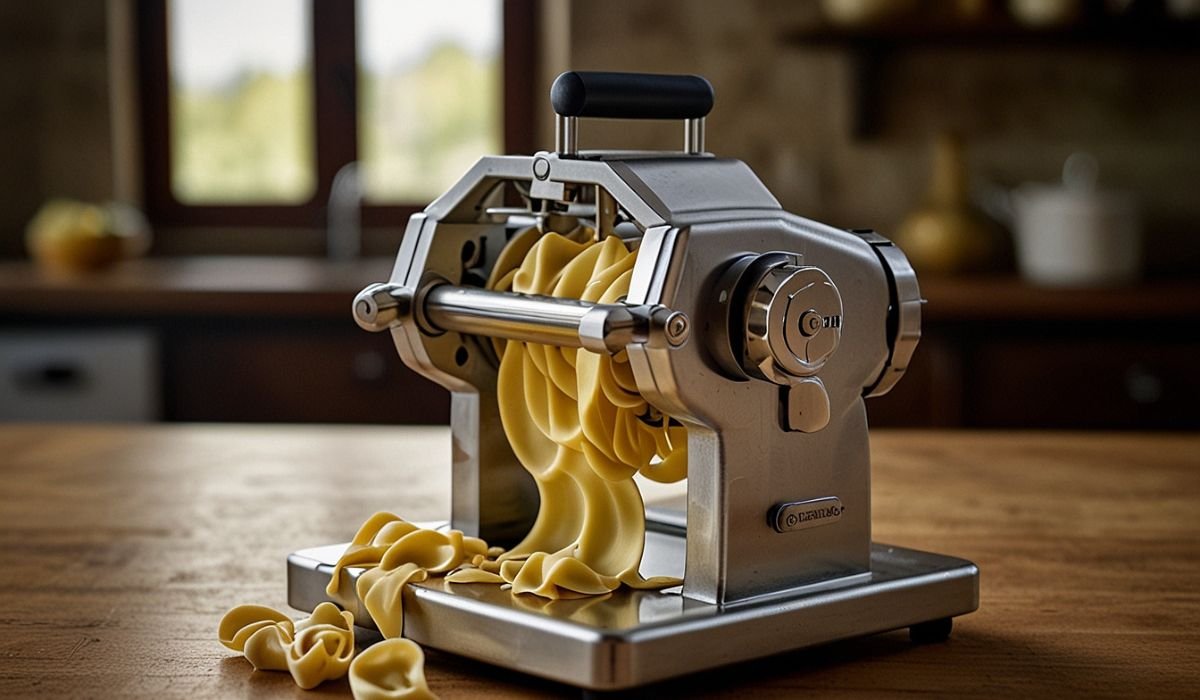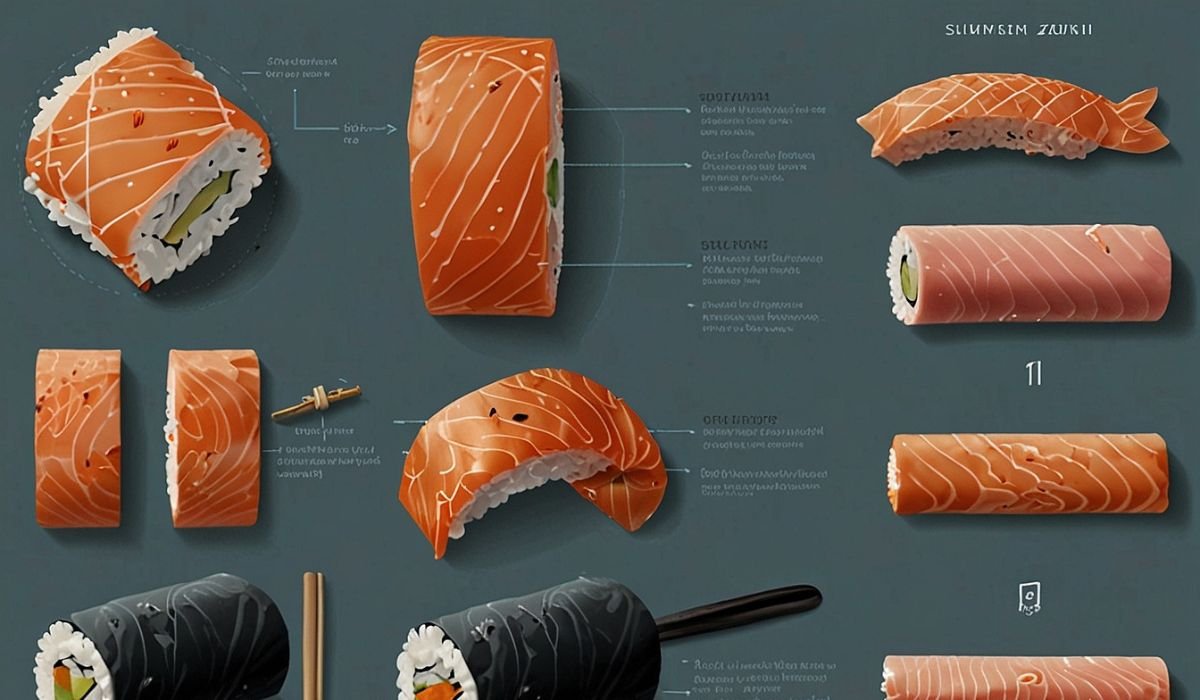Let’s be honest. Making fresh pasta from scratch is a deeply satisfying, almost magical process. That is, until you get to the part where you’re tasked with filling and shaping dozens—nay, hundreds—of tiny, intricate tortellini. Your back aches, your fingertips are caked in semolina, and what started as a joyful culinary adventure slowly morphs into a test of endurance. Sound familiar?
This is precisely where the tortellinatrice enters the scene, not as a soulless robot, but as a master craftsperson’s most trusted apprentice. It’s the piece of kitchen machinery you’ve probably never heard of, but once you understand its power, you’ll wonder how you ever lived without it.
This isn’t about replacing the human touch. Far from it. It’s about augmenting it. It’s about taking the most tedious, time-consuming part of the process and handling it with flawless, mechanical precision, freeing you up to focus on what really matters: crafting sublime fillings and sauces. So, pull up a chair. Let’s dive deep into the world of automated pasta perfection.
What on Earth is a Tortellinatrice? (And How Does It Work?)
Simply put, a tortellinatrice (pronounced tor-tel-lee-nah-TREE-cheh) is a specialized machine designed to automatically produce filled pasta like tortellini, ravioli, and agnolotti. The name itself is a dead giveaway—it’s Italian for “tortellini maker.”
But how does this culinary wizardry actually happen? The process is a beautiful dance of engineering and gastronomy.
- The Dough Sheets: You start by feeding two thin sheets of freshly rolled pasta dough into the machine. These will form the top and bottom of your pasta pockets.
- The Filling Deposit: Here’s where the magic starts. A hopper, filled with your decadent filling—be it ricotta and spinach, a rich meat blend, or a modern pumpkin and amaretti—sits atop the machine. A piston precisely deposits dollops of filling onto the bottom sheet of dough at perfectly timed intervals.
- The Cut and Seal: As the top sheet of dough is laid over the filling-laden bottom sheet, a rotating die—a custom-shaped stamp—cuts through the combined layers. In one fluid motion, it creates the individual pasta shape and seals the edges shut with hydraulic pressure.
- The Output: Voilà! A continuous stream of perfectly uniform, beautifully sealed tortellini emerges, ready for a quick dusting of semolina and either the pot or the freezer.
It’s a mesmerizing thing to watch. The machine takes over the finicky work of portioning and sealing, which is notoriously difficult to do consistently by hand. A slight imperfection in a handmade seal is a one-way ticket to “filling leak” city once it hits boiling water. The tortellinatrice virtually eliminates that problem.
Hand-Cranked vs. Automatic Tortellinatrice: A Pasta Pro’s Dilemma
Now, you might be thinking, “I’ve seen hand-cranked ravioli stamps. Isn’t that the same thing?” That’s a great question, and the difference is night and day. Let’s break it down.
| Feature | Hand-Cranked Ravioli Stamp / Tray | Automatic Tortellinatrice |
| Speed & Output | Slow and methodical. Suitable for a single family meal. | Blisteringly fast. Designed for high-volume production—think restaurants or serious home entertaining. |
| Labor Intensity | High. You’re still manually filling, placing the top sheet, and stamping each one. | Low. You load the dough and filling, and the machine does the repetitive work. |
| Skill Required | Moderate. Requires a steady hand to avoid air pockets or misaligned stamps. | Lower initial skill floor, but requires setup finesse and understanding of dough consistency. |
| Uniformity | Good, but with visible human variation. Charming, but inconsistent. | Flawless, restaurant-quality uniformity every single time. |
| Versatility | Often limited to one shape/size per stamp. | Many machines allow for interchangeable dies for different shapes (tortellini, ravioli, agnolotti). |
| Investment | Low-cost. A simple tool for the curious home cook. | Significant. This is a serious investment for the dedicated pasta enthusiast or professional. |
So, which one is for you? The hand-cranked tool is a wonderful gateway into filled pasta. But the automatic pasta maker is for when you’ve caught the bug—when you’re supplying the entire neighborhood with fresh tortellini for the holidays, or dreaming of a small-scale food business.
The Unvarnished Truth: Pros and Cons of Owning One
Let’s not sugarcoat it. As incredible as this machine is, it’s not for everyone. Based on my conversations with chefs and serious home users, here’s the real scoop.
The Glorious Advantages 👍
- Unmatched Efficiency: This is the big one. What takes an hour by hand can be accomplished in minutes. It completely transforms the economics of making fresh, stuffed pasta at home.
- Perfect Consistency: Every single tortellini is identical in weight, shape, and seal. This isn’t just about looks; it ensures even cooking, so every piece in the pot is done at the same time.
- Commercial Viability: If you’ve ever toyed with the idea of selling your pasta at a farmer’s market or to local restaurants, a tortellini machine is non-negotiable. It makes a small business scalable.
- Joy in the Process: It removes the frustration, letting you focus on the creative aspects—developing new filling recipes and perfecting your sauces.
The Hard Realities 👎
- The Sticker Shock: Let’s just say a high-quality tortellinatrice represents a major investment, often running into the hundreds, if not thousands, of dollars. This isn’t an impulse buy.
- The Learning Curve: Getting the dough texture just right is critical. Too wet, and it gums up the die. Too dry, and it won’t seal properly. Dialing in the consistency is an art in itself.
- Space Hog: This is not a gadget you tuck away in a drawer. It’s a countertop (or even freestanding) appliance that demands real estate.
- Setup and Cleanup: You can’t just whip it out for a quick 10-minute session. Assembly, calibration, and, frankly, the cleanup process are all part of the deal. It’s a commitment.
Honestly, the cleanup isn’t talked about enough. You need to be the kind of person who finds the deep, meditative clean of a kitchen tool after a big project to be satisfying. If you don’t, this machine will gather dust.
Is a Tortellinatrice Right For YOUR Kitchen? Ask Yourself These Questions.
Before you max out your credit card, take a breath and have a heart-to-heart with yourself. This machine is a specialist, not a generalist.
- How often do I truly make fresh, filled pasta? Be honest. Is it a quarterly hobby or a weekly passion?
- What’s my volume? Are you cooking for two, or are you regularly hosting dinners for ten? The break-even point on time vs. effort is real.
- Do I value perfection over charm? Some people adore the slight irregularities of handmade pasta. The machine’s clinical perfection might feel… soulless to them. And that’s a valid feeling!
- Do I have the space and patience? This isn’t a toaster. It requires a dedicated corner of your kitchen and a mindset willing to learn its quirks.
If you found yourself nodding along, thinking, “Yes, that’s me. I make huge batches of tortellini for my freezer and I’m tired of the carpal tunnel,” then you, my friend, are the target demographic.
Beyond Tortellini: The Versatility of a Pasta Making Machine
Here’s a fun tangent that often gets overlooked. While the name tortellinatrice is specific, many of these machines are shockingly versatile with the use of interchangeable dies. Think of the die as a custom-shaped cookie cutter for pasta.
With the right attachments, your stuffed pasta maker can become a:
- Ravioli Machine: Creating perfect squares or circles.
- Agnolotti Maker: Crafting the distinctive rectangular Piedmontese pasta.
- Even a Garganelli Press! Some models can extrude and cut garganelli, the ridged quill-shaped pasta.
This dramatically increases the value proposition. It’s not a one-trick pony; it’s a whole pasta-shop-in-a-box.
FAQs
Q1: Can I use regular pasta dough from the supermarket in a tortellinatrice?
Absolutely not. Those pre-made sheets are often too thick and lack the specific elasticity needed. You must use freshly rolled pasta dough, typically made with 00 flour and eggs, rolled to the precise thickness recommended by the machine’s manufacturer.
Q2: What’s the best filling consistency for the machine?
The filling needs to be smooth, dense, and hold its shape perfectly—think a thick, pipeable paste. Any looseness or chunks that are too large will cause jams. A common rookie mistake is using a filling that’s too wet.
Q3: Is it difficult to clean?
It can be, but it’s manageable. Most parts are dishwasher safe, but the die, with all its nooks and crannies, often requires a dedicated brush and some patience to clean thoroughly. You learn to clean it immediately before the dough dries and hardens.
Q4: How does a tortellinatrice differ from a pasta extruder?
An excellent question. An extruder, like those used for making macaroni or spaghetti, forces a dry, stiff dough through a bronze die under immense pressure. A tortellinatrice works with soft, sheeted dough, cutting and sealing it around a filling. They are fundamentally different tools for different types of pasta.
Q5: Are there any good semi-automatic alternatives?
Yes, there are manual “ravioli trays” where you place the dough and filling into a mold and then roll a pin over it. They are a great middle ground, speeding up the process significantly compared to doing everything totally by hand, but they don’t hold a candle to the speed of a fully automatic tortellinatrice.
Q6: Which brands are considered the best?
In the professional and pro-sumer space, names like Arborea, Dolly, and Marcato are often spoken of with reverence. They are the workhorses of the industry, built to last for decades.
The Final Fold
The tortellinatrice is more than just a machine; it’s a statement of intent. It’s for the cook who has moved beyond dabbling and has fallen head-over-heels in love with the craft of pasta making. It’s for the person who sees the sublime beauty in a hundred identical, pillow-like parcels of joy, all cooked to a perfect, uniform al dente.
It won’t replace the soul of your nonna’s recipe, but it will ensure you can share that soul with far more people, with far less frustration. The future of artisanal food at scale, I suspect, lies in this beautiful marriage of human creativity and mechanical precision.
So, what do you think? Are you ready to take your pasta game to an industrial—yet utterly delicious—level?
You may also like: Bin Matcha: The Secret to a Mellow, Kitchen-Ready Green Tea










